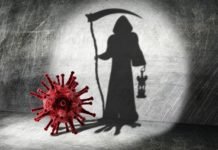One of the most significant chapters of the Indian independence was the classification of indigenous Indian population into several categories as per requisite of the then English Rulers. It was the keen interest of the British government (before Indian Independence) to become the whole-sole owner of all the substantial resources present in India, Forests are one of them, because they are most valuable. These large, abundant resources formed the basis for a variety of industrial goods, including wood, minerals, and other non-food products. But something prevented them from freely accessing those priceless resources, the Tribes, living in the forests who are adamantly opposed to transferring their land to them. When the British ruled, some tribes were branded as criminals. For those tribes that regard the woodlands as their own, they provide their sustainable livelihood. Their primary means of subsistence are the Jal, Jangal, and Jamin.
The freedom of movement for the residents of these villages was severely constrained. As a result, they engage in conflict with British authorities. As a result, the British government sought to control the tribes by identifying, classifying, and notifying such communities as criminal tribes. It has been proven that the predominance of caste systems is dependent on the type of profession, therefore these are the castes known for their criminal propensities.
The British government compiles a list of incidents in which wayfarers have been attacked in Central India. The Criminal Tribes Act of 1871 was founded on this list of assaults. A number of tribes were flagged as criminal communities by this act. It was reported that several tribes were listed under the Criminal Tribe Act, or CTA, of 1871. This act was forced also to preserve law and order following 1857’s first war of independence, or mutiny, in India, which terrorised the British authorities. Any person belonging to those tribes that have been classified as criminal tribes can be considered a criminal under the CTA. Likewise, if a crime is committed in the vicinity of a particular tribe or community residing there, the police can arrest a member of that tribe and they are subjected to numerous atrocities. Therefore, it is a complete act of brutality and viciousness on the part of British officials against certain communities. It was a punishment carried out without remorse on the part of these tribes.
In 1911, CTA had some additional modifications, but nothing significant changed. The statute was changed in 1924 to help the criminal tribes integrate into society, but the fundamental ideology driving the legislation’s goal remained the same.
The story did not end with India’s Independence when people of Indian origin have seated on place of administrators. This is why those communities who have played an active role and are an integral part of freedom struggle have never been taken seriously and yet the members of the community are termed as Born Criminals, by the local people as well as police administrators.
Munshi commission was constituted by the Governor of the Bombay province in 1937 to evaluate the act. The Madras government revoked the ordinance in 1948, while the Government of Bombay did so in 1949. This Criminal Tribe Act has been repealed and no longer has a formal basis to constitute an act over these people, as per the suggestion of the Ayyangar committee in 1952. Their emancipation from long-standing brutality is made possible by this abolishment. However, the government introduced the Habitual Offender Act in 1959 in an effort to control or tame a few communities that were perpetrating crimes against members of society. After 1952 the process for de-notification of the tribes begins.
The Kalelkar Commission was established in 1953 and recommended that the term “ex-criminal tribes” to be dropped in favour of the term “De-notified communities.” The Lokur Committee was established in 1965 to further examine the status of the Schedule Castes and Schedule Tribes. It recommended that all members of the De-notified tribes be included in a separate group with development plans specifically created for them.
The establishment of a separate commission to address their needs and complaints was made possible by Justice Venkatachaliah’s national commission, which reviewed the functioning of the constitution in 2002 and recommended programmes to strengthen the economic and educational development of the de-notified.
Finally, a National Commission was established, and Balkrishna Reneke was appointed to lead it. It was established in the year 2005. The narrative of subsequent developments with regard to these tribes is also provided by the National Commission for De-Notified, Nomadic, and Semi-Nomadic Tribes in 2005. According to the Reneke Commission report, these communities continue to be stigmatised as criminals by society and the police, and it is advised that a state-by-state list of these communities be created.
Another Commission under the direction of Bhiku Ramji Idate, the National Commission of De-notified, Nomadic and Semi-Nomadic Tribes presented a report to the Government of India in 2017 that emphasised the need for them to have access to housing, infrastructure, health facilities, microfinance, and opportunities for skill development. The report urges the creation of a permanent commission, a distinct directorate, a full census survey for NT and DNTs, and an urgent need for a public awareness campaign among DNTs and the general public. They have suggested 20 areas for rehabilitation that can help people reintegrate into society.





















